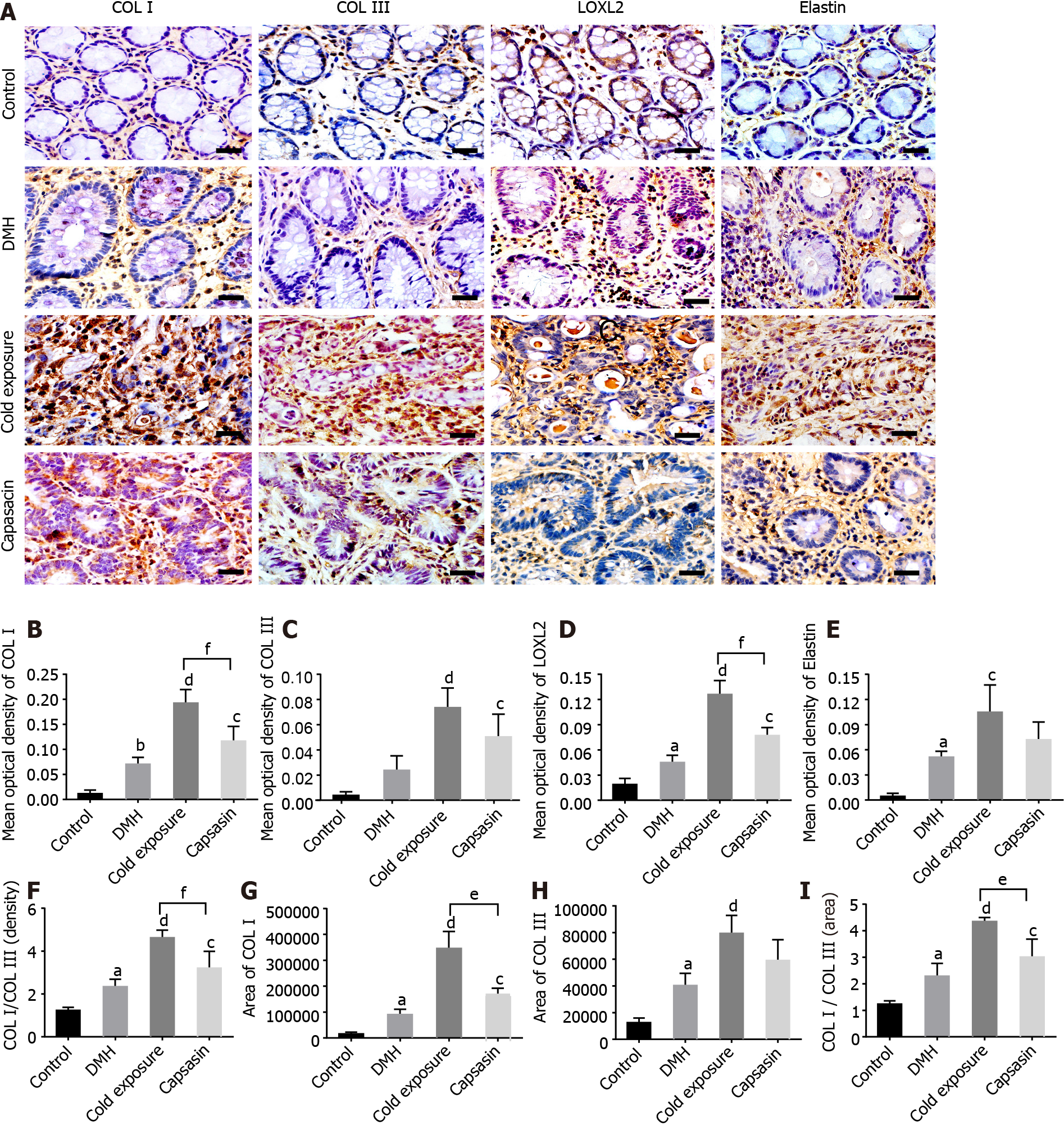Copyright
©The Author(s) 2021.
World J Gastroenterol. Oct 21, 2021; 27(39): 6615-6630
Published online Oct 21, 2021. doi: 10.3748/wjg.v27.i39.6615
Published online Oct 21, 2021. doi: 10.3748/wjg.v27.i39.6615
Figure 6 Changes in collagen, elastin and lysyl oxidase-like-2 proteins in the colonic tissues of different treatment groups.
A: Protein expressions of type I collagen (COL I), type III collagen (COL III), lysyl oxidase-like-2 (LOXL2), and elastin in the colonic tissues via immunohistochemical staining. Magnification, × 400, scalar bar 20 μm; B-I: Densitometric analysis of COL I (B), COL III (C), LOXL2 (D), elastin(E), COL I/COL III (F), COL I area (G), COL III area (H), and COL I area/COL III area (I) during immunohistochemical staining. aP < 0.05, bP < 0.01, control compared with 1,2-dimethylhyrazine (DMH); cP < 0.05, dP < 0.01, DMH compared with cold exposure and capsaicin-treated group; eP < 0.05, fP < 0.01, cold exposure compared with capsaicin-treated group.
- Citation: Qin JC, Yu WT, Li HX, Liang YQ, Nong FF, Wen B. Cold exposure and capsaicin promote 1,2-dimethylhyrazine-induced colon carcinogenesis in rats correlates with extracellular matrix remodeling. World J Gastroenterol 2021; 27(39): 6615-6630
- URL: https://www.wjgnet.com/1007-9327/full/v27/i39/6615.htm
- DOI: https://dx.doi.org/10.3748/wjg.v27.i39.6615









